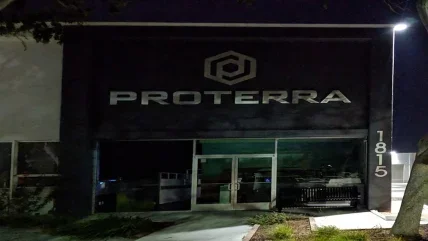
 In Caithness, Scotland an abandoned turbine lay in an old property. Unused for 40 years, the site had begun life as a mill in the 1800s, deriving power from a 12ft overshot waterwheel. During the 1930s the wheel was removed and replaced with a low head semi-Kaplan/Francis turbine that provided electricity for the principle house, likely as a DC system for lighting and early electrics.
In Caithness, Scotland an abandoned turbine lay in an old property. Unused for 40 years, the site had begun life as a mill in the 1800s, deriving power from a 12ft overshot waterwheel. During the 1930s the wheel was removed and replaced with a low head semi-Kaplan/Francis turbine that provided electricity for the principle house, likely as a DC system for lighting and early electrics.
The system underwent further renovations in the 1970s and 80s with the extension of the national grid to the property and latterly the hydro provided power to a dedicated heating circuit in the house.
With the property under new ownership, Proterra Energy was introduced to the turbine in 2018. The new owner wanted to renovate the property, and turbine system, creating a fully integrated, renewable, heating system that would see the existing turbine brought back to life to provide power for a modern heat pump. This would replace the two large oil boilers currently heating the property, decreasing dependence on fossil fuels.
The shift from fossil fuel-based heating systems to renewable heating systems, such as ground and air source heat pumps, is a corner stone strategy of the Scottish Government in their drive towards net zero. The implementation of the strategy is challenging, particularly in the geographically remote Highland Landscape.
In the Highlands of Scotland, there are no simple fixes such as mains gas, that might use a green hydrogen blend in the future. The electrical grid is at capacity; the long power lines don’t have the capacity to carry the increased electrical demand associated with the large-scale installation of heat pumps, or EV chargers to charge the changing fleet of cars that we will drive.
Dispersed generation from micro renewable installations is one of the key solutions to this problem – and so in this instance, a plan for renovation, automation and integration of the hydro system was implemented. Carrying on the evolution of hydropower that has served the site since the 1800s.
The heat source for the heat pumps was the lade for the mill/turbine, a brilliant idea using the same water resource for two critical parts of the system. The turbine needed to be refurbished but before investing in expensive new alternators and control systems the turbine and its hand-built components had to be assessed and tested.
Comfortable that the key components of turbine runner, shaft and vanes were serviceable, a new control system and alternator were later fitted to bring the electrical side of the system in line with current regulations. The old mill lade had run continuously since the days of the mill and so the environmental licencing was approved relatively quickly.
With the new system installed, generated power is passed along an upgraded cable, back to the house where it is distributed throughout the property but is the primary power feed for the heat pumps. The turbine generates most through the winter, when heating demands are greatest. In the first half of 2022 the system had a load factor of 70%, generating ~ 46,000 units of power for local use, in some small part freeing up the grid.
For the future, we will continue to monitor the turbine, spare parts are non-existent, but with regular servicing and care, and a client who is enthusiastic about its operation we are hopeful it has many years left.

A photo from inside the turbine house with renovated control system and new alternator. The fly wheel and main shaft pass through the wall to runner/vanes in the pit on the other side.






